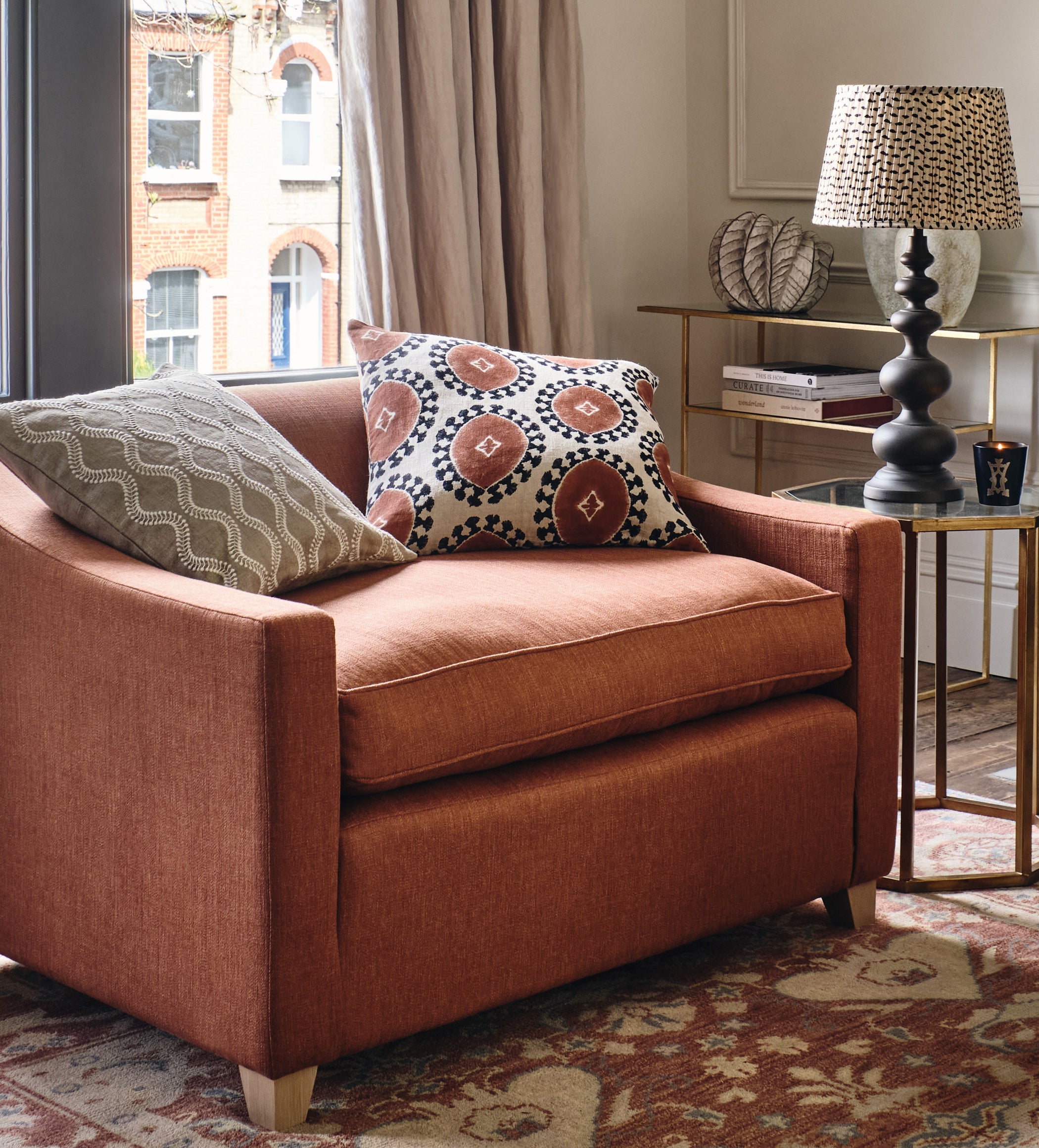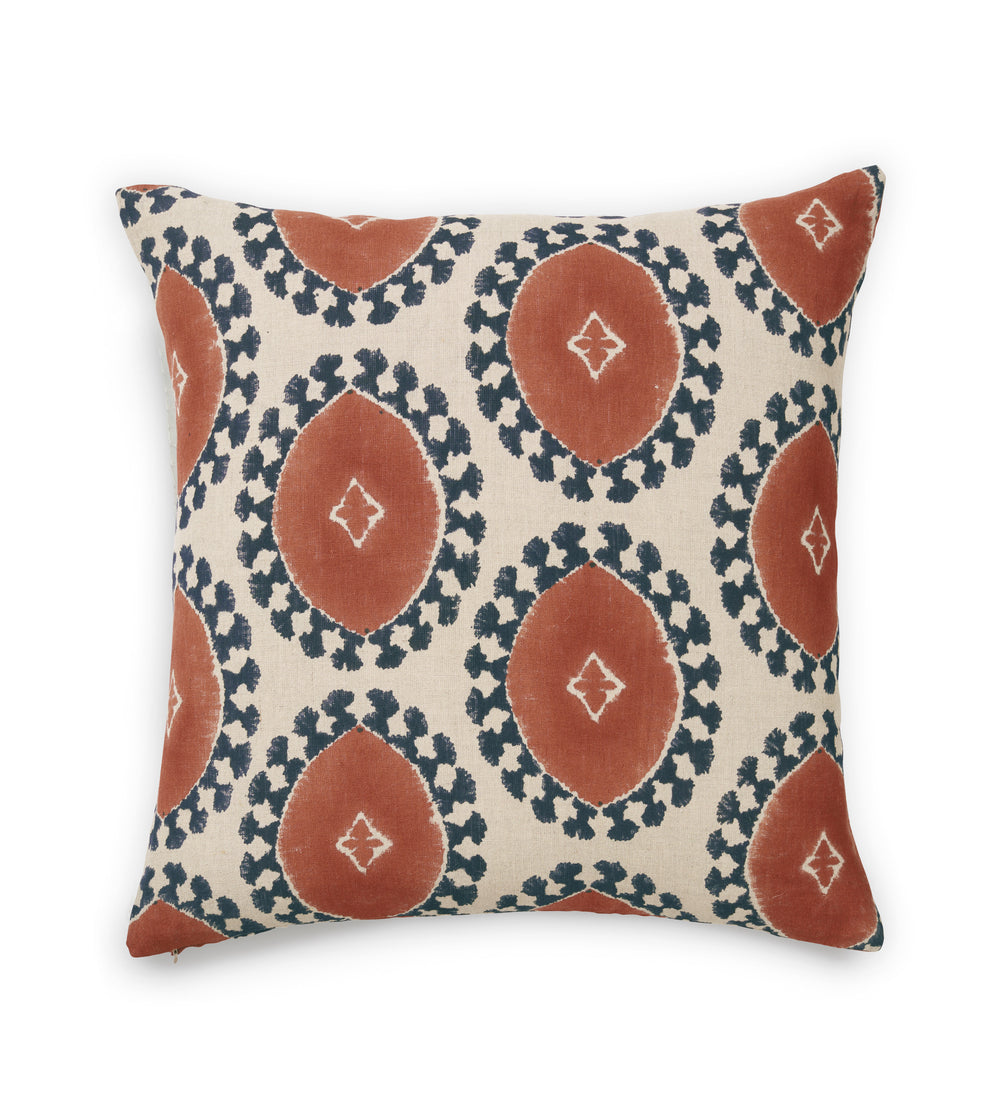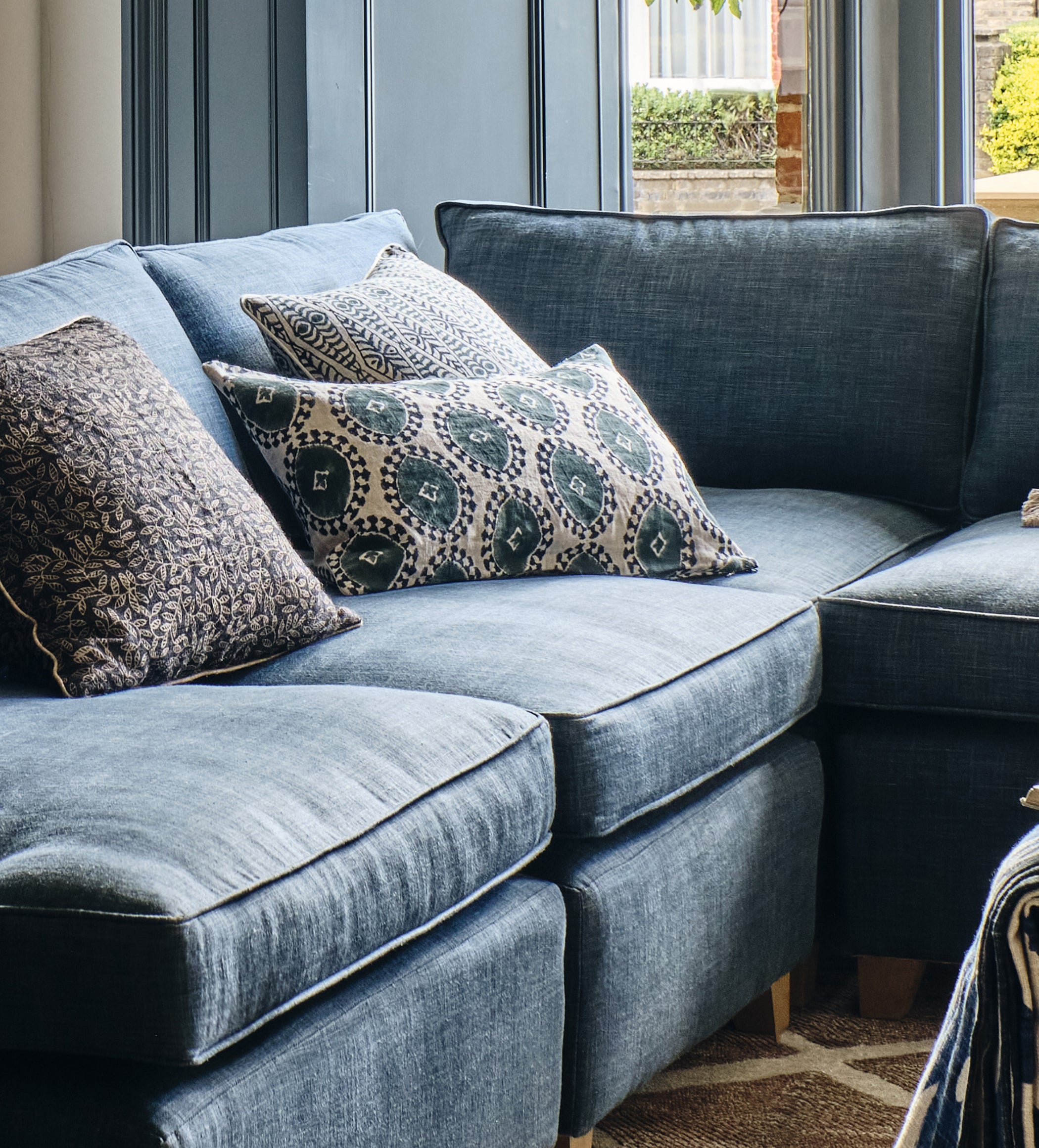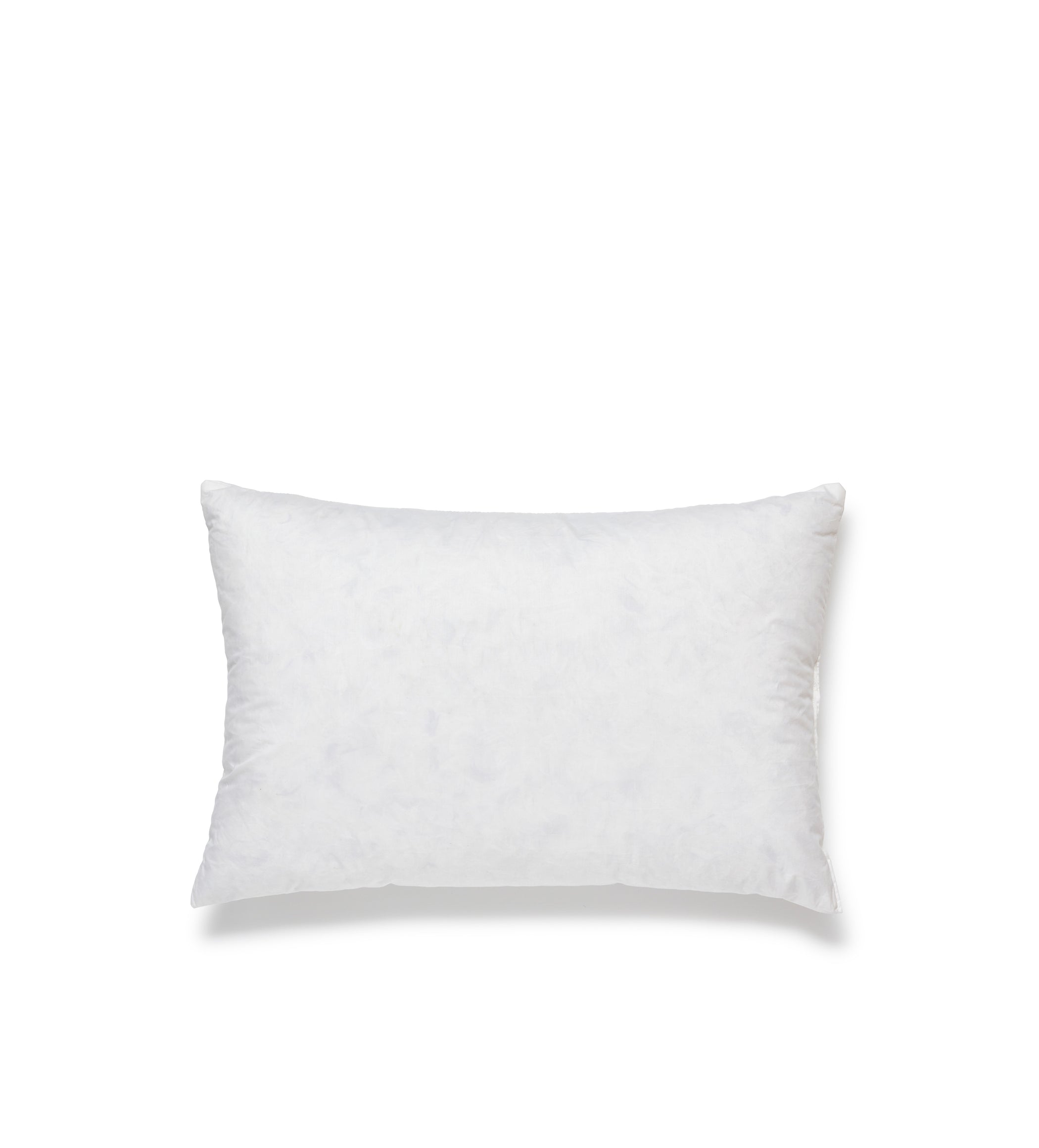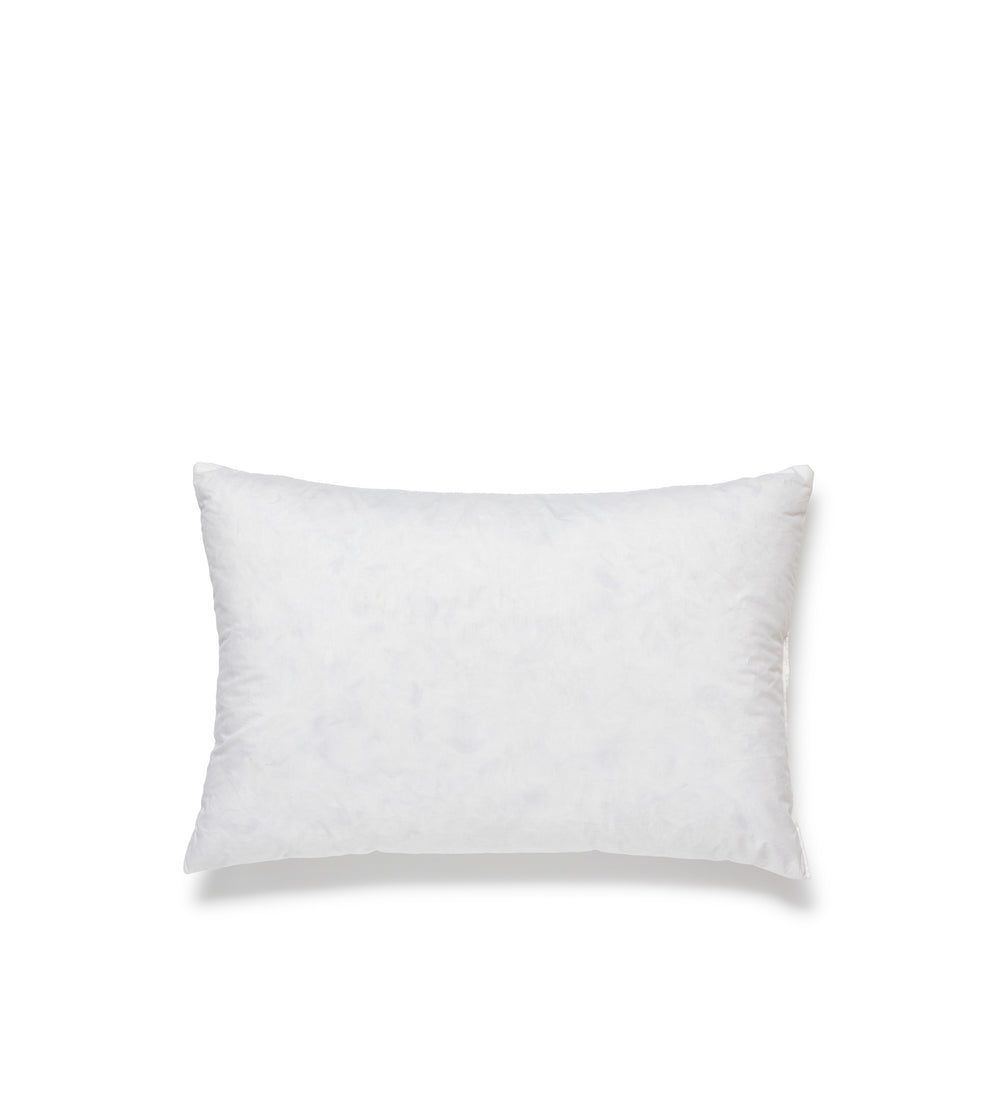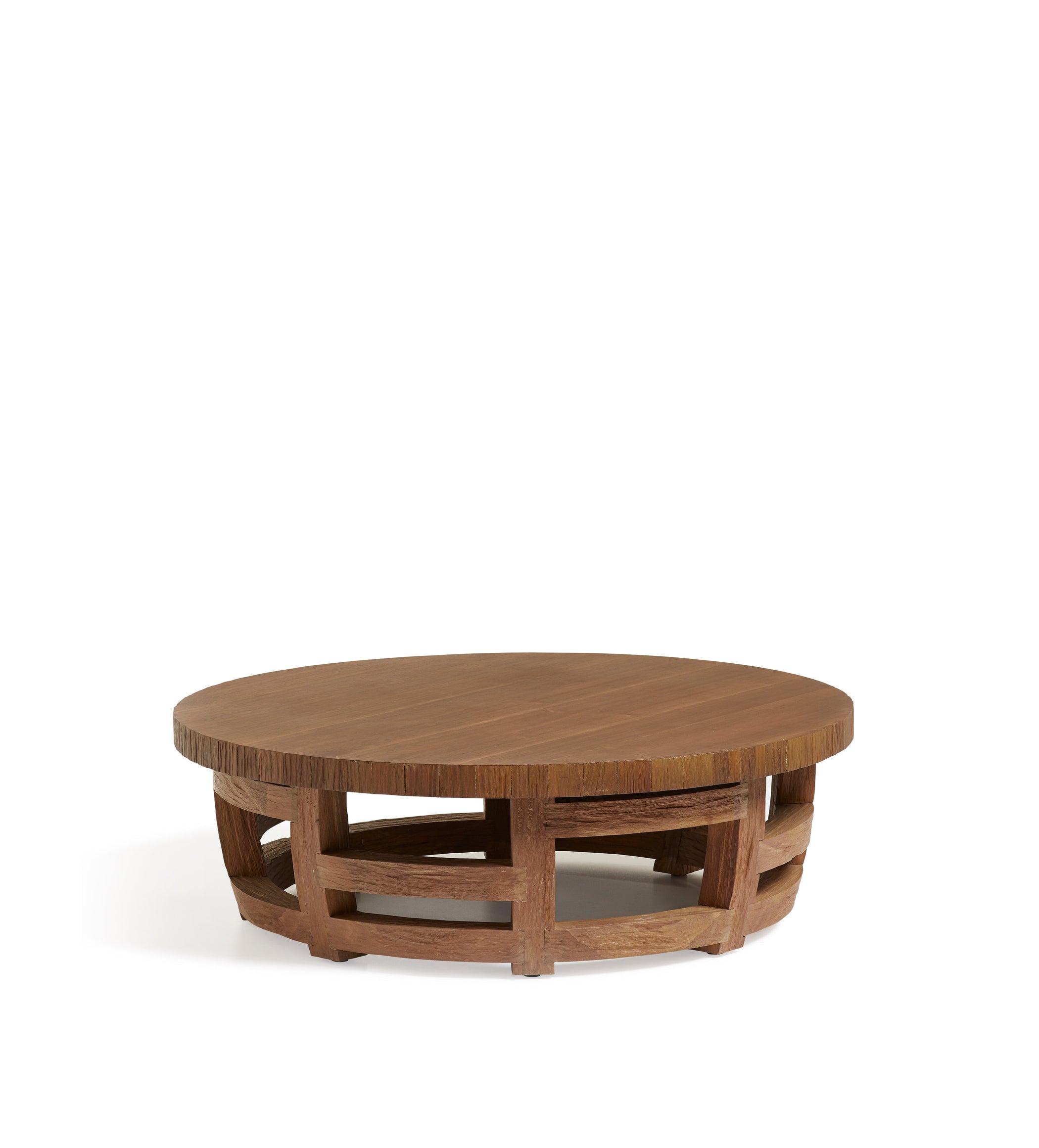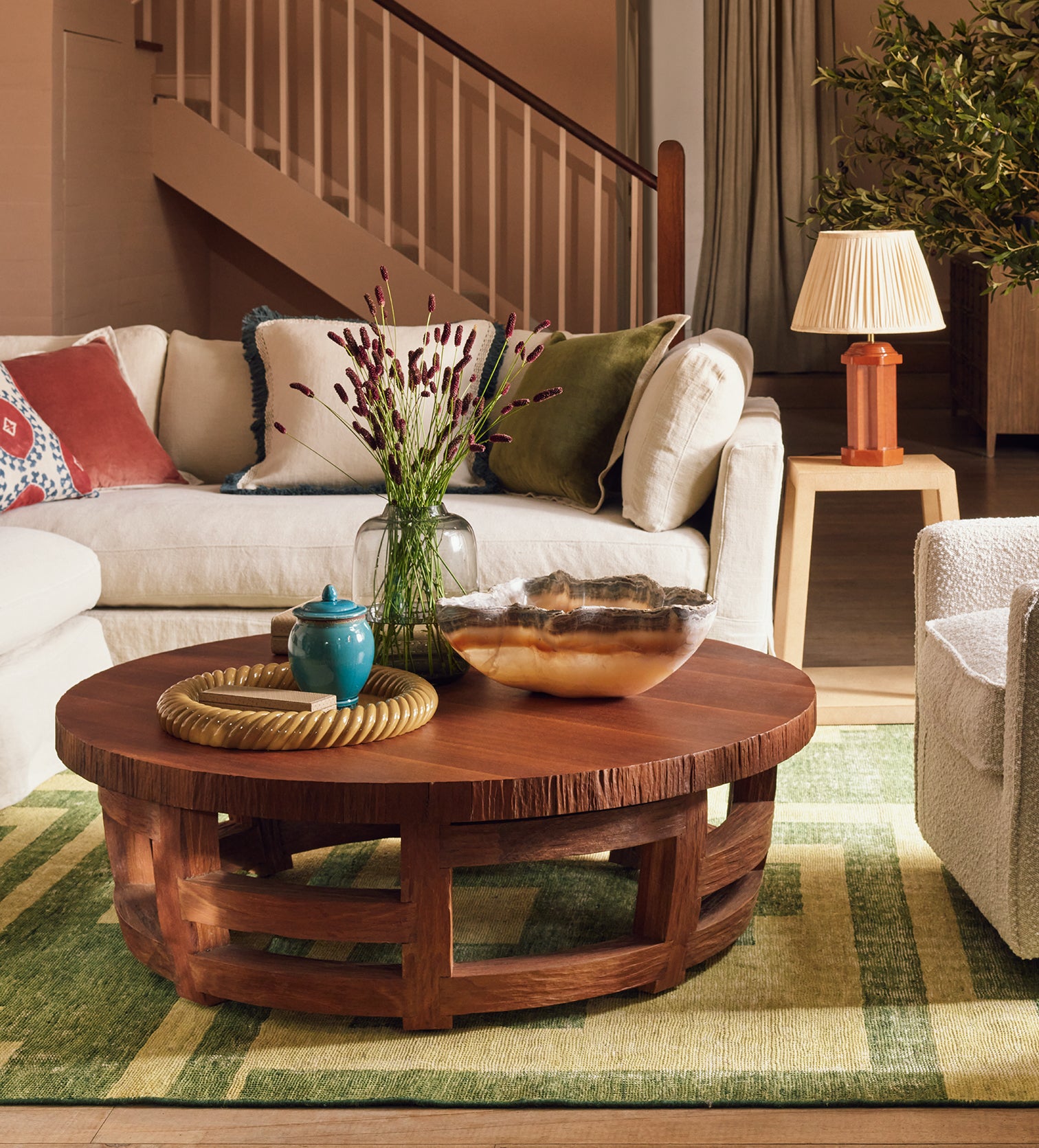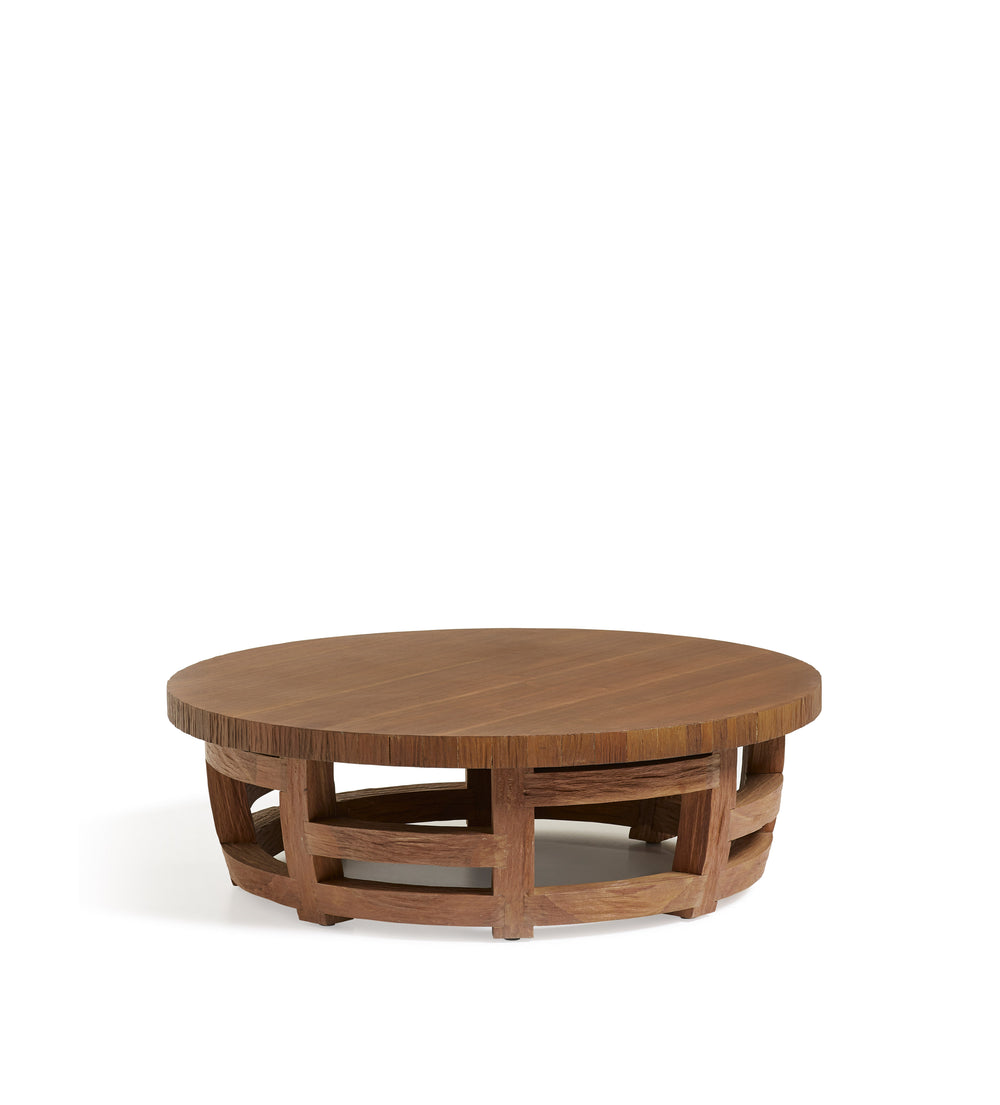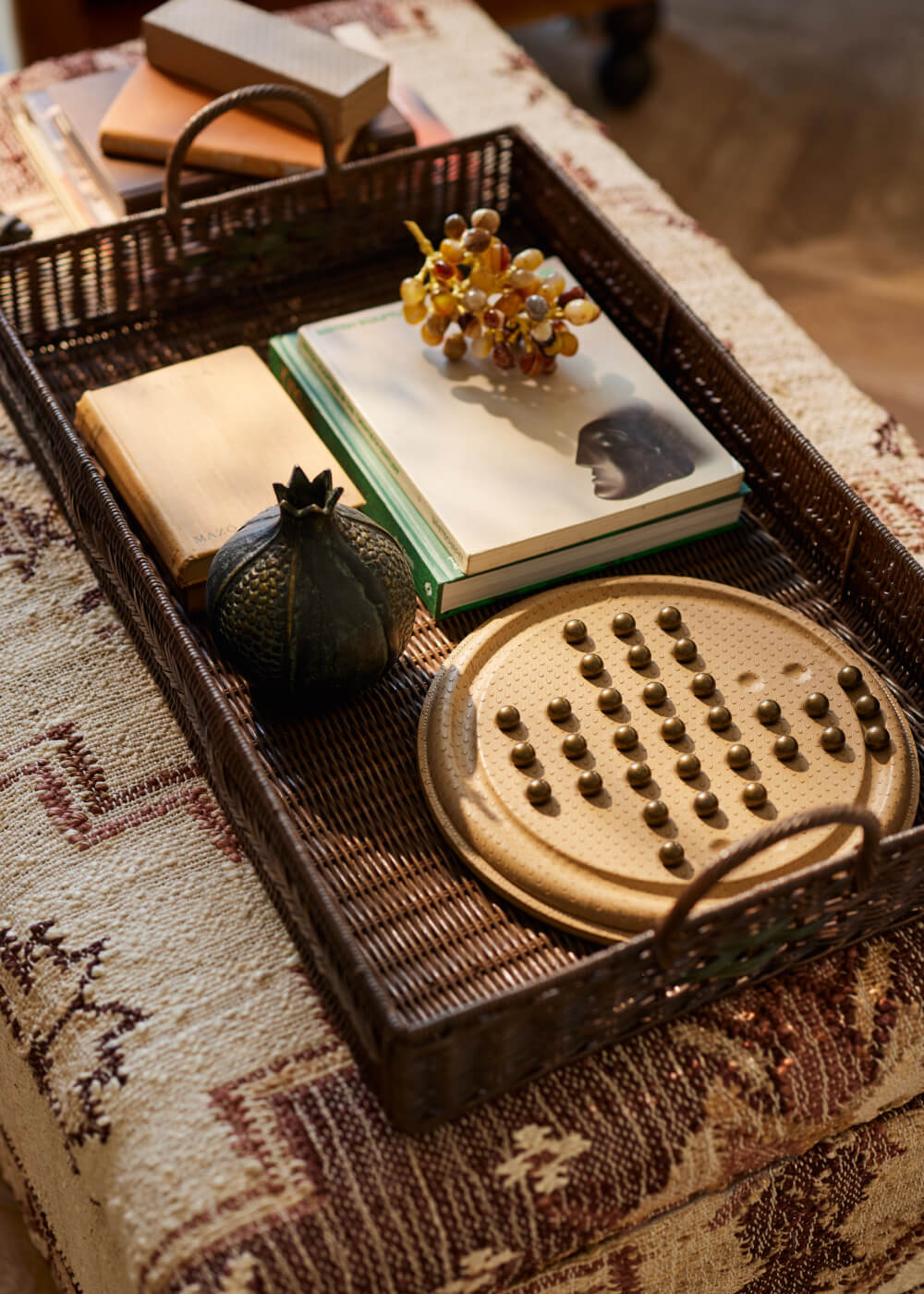Colour can be a very exciting part of interior design, but it can also be intimidating. It’s the basis of everything you choose, and you may be afraid of getting yourself stuck on a particular palette. Choosing the colours of your cushions can be a simple way to create a colour scheme without committing to expensive pieces of furniture or a week’s worth of painting the walls. We pulled together a few tips while in conversation with two of our in-house interior designers, Charlotte Saunders and Sarina Hawkins, to help you contemplate where to start when mixing and matching colours with your cushion combinations.


Published 13 February 2025 | Last Modified 26 August 2025 | Emily Sims
Mixing And Matching: Creating Harmonious Colour Combinations With Cushions
“When choosing a colour palette, focus on complementary tones to create a more versatile and elevated scheme.”




Start with your sofa
As you probably already have the sofa, (though if not, we have a great selection to choose from…) you already have a starting point. Depending on the colour of your sofa, you will have many options for complimentary and contrasting shades to make an impact. If you’re asking how to match cushions to your sofa, read on.
Neutral Sofas
If you have a neutral-coloured sofa – think white, off-white, beige or grey – then you have a balanced foundation. Add pops of colour and pattern for a lively touch and bring the sofa into focus.
Dark sofas
If your sofa is navy, black or on the darker end of its colour’s spectrum, it will lend a sense of moodiness and sophistication. Adding bright cushions will create a lighter touch that softens this style.
Bright sofas
If you have a brightly coloured sofa then you already have a lively and fun piece in your sitting room. So that it does not overwhelm the space, why not temper it with neutral cushions and patterns for a calming addition.
Plain sofas
If your sofa is all one colour, then try adding patterned cushions for additional interest to make it stand out.
Patterned sofas
Alternatively, if your sofa is patterned and already eye-catching, a few block-colour cushions will let the sofa sing rather than taking away from its centre-stage presence.
Shop cushions
Choose a colour palette to set the tone
When it comes to choosing a colour palette for your cushion combination, beyond the sofa itself you may want to pay attention to other pieces you already have in the room rather than starting completely afresh. Charlotte and Sarina say “if you have a rug or a piece of art, avoid trying to ‘match’ the colours; instead, focus on complementary colours as this will allow more versatility and elevate the overall colour scheme. Plus, you won’t end up feeling stuck with just one or two colours.”

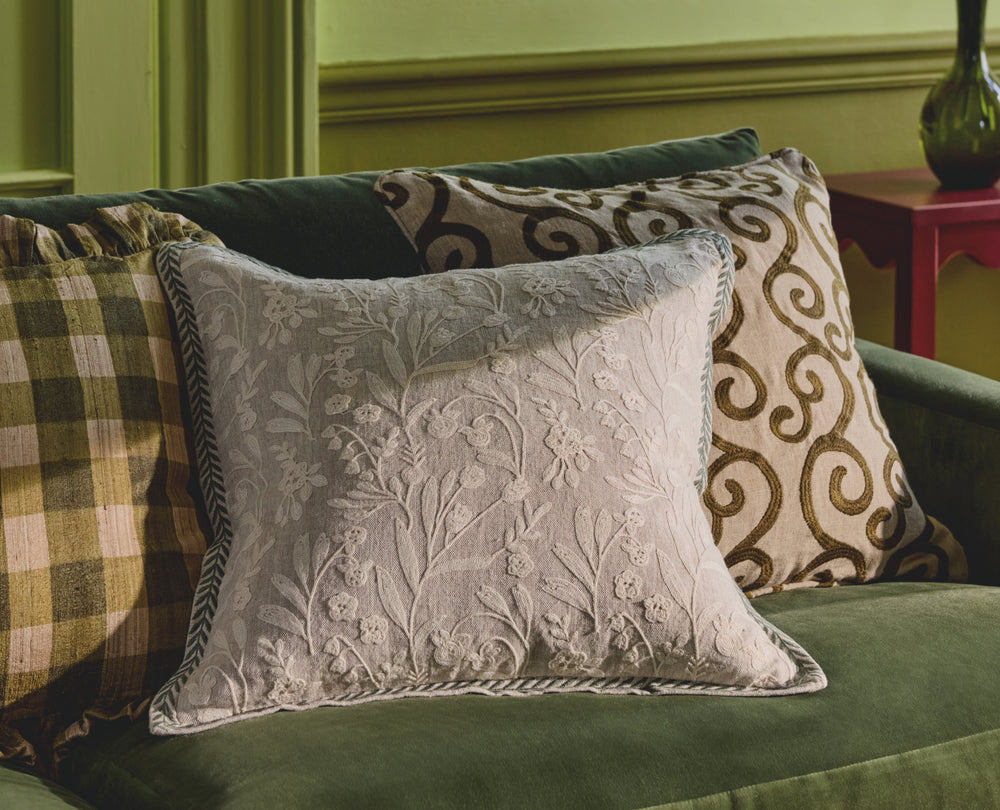
Understand the colour wheel
Look to the colour wheel to understand what colours go well together. Colours that are opposite each other – such as blue and orange, yellow and purple, red and green – are considered complementary. They create high contrast that enhances the other’s intensity while simultaneously balancing each other out, with one colour often dominating while the other supports.
Create a cohesive scheme
While Charlotte and Sarina suggested not trying too hard to ‘match’, they also say that picking out one or two colours from other pieces can make the room feel more cohesive: “you need to find a balance within the scheme. Don’t be afraid to mix a variety of colours, patterns and textures together. These will add layers to your scheme and the playful combination of balanced colours will add a lovely vibrancy.”

Consider the mood
What type of atmosphere are you after? Warm colours bring a cosy ambience, while cool colours can keep it relaxing. Charlotte and Sarina suggest focusing “on how you want the room to feel; blue tones are calming while light greens are fresh.” Adding pops of colour will bring energy and a striking effect. We have a whole guide on colour psychology which delves into the science behind the mood that each colour creates.
Ocellus Cushion Cover - Midnight Green
Hand Finished
£70.00
Consider the Season
Cushion covers, being small and removeable, are an easy way to change your room scheme with the seasons as you can use one pad and interchange its cover. In summer you could opt for light and bright cushion covers to make the room feel fresh, while in winter try dark and warm hues to make it even more cosy. Charlotte and Sarina also say that in considering the seasons, “you have to factor in the natural light, how will your room look at each time of the day? You don’t want to have to change your colour scheme every season, but to adapt it at different times of the year, swapping out your cushion covers for different colours and textures is an easy way to do it!”
We hope these tips on choosing colour combinations for your cushion arrangements will help you to experiment with your own. All of these tips can also be applied to your outdoor space with our specially designed weather-resistant Outdoor Cushions.

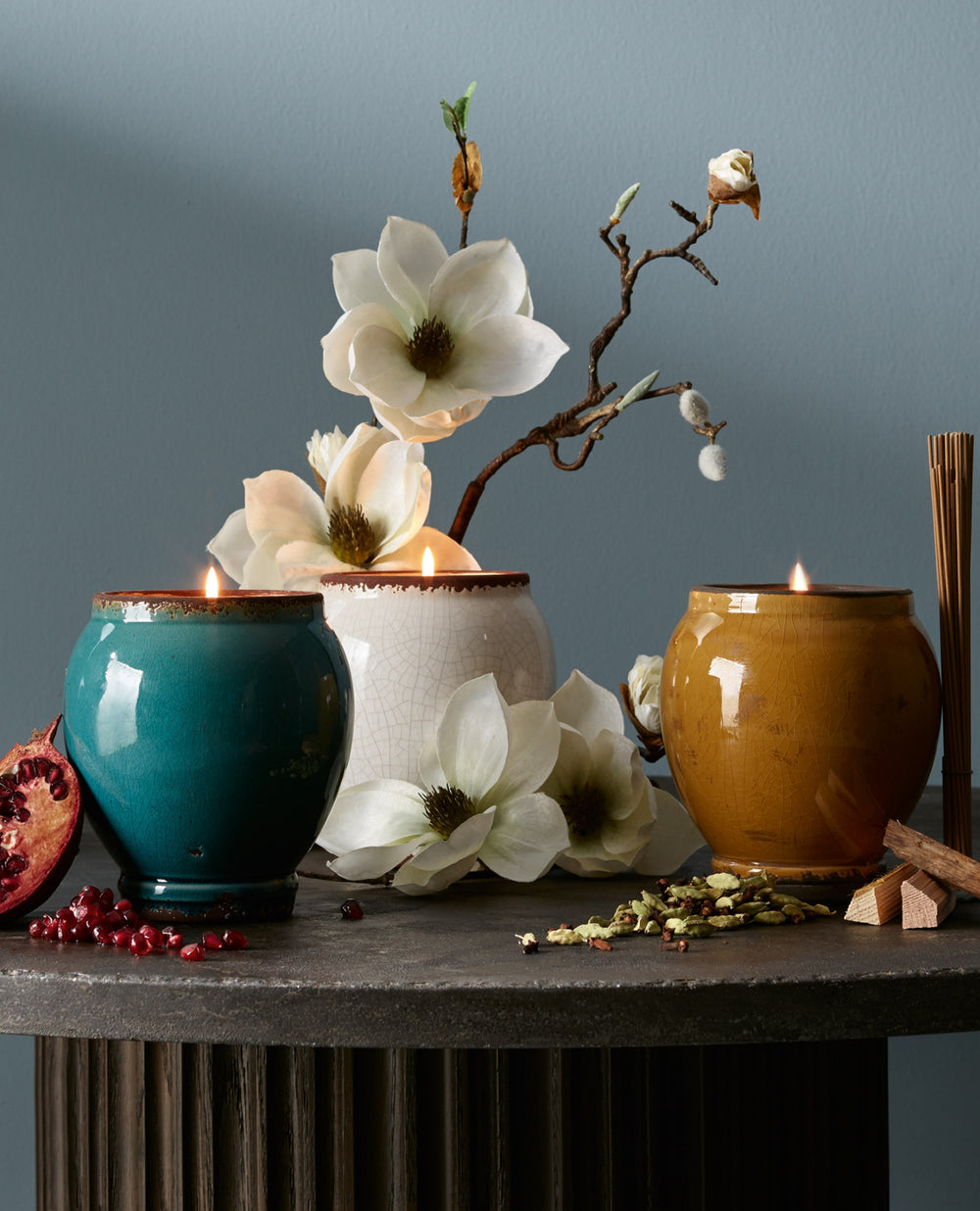
A Journey in Scent: Introducing our Odyssey Candle Collection
Interested in more inspiration?
From tips and tricks to decorating advice and expert know-how, we've got plenty of bright ideas for the home and garden.

10 October 2025
The Art of the Multi-Purpose Room
How to Create a Multi-Purpose Room Now, more than ever, our home needs to work as hard as we do,...
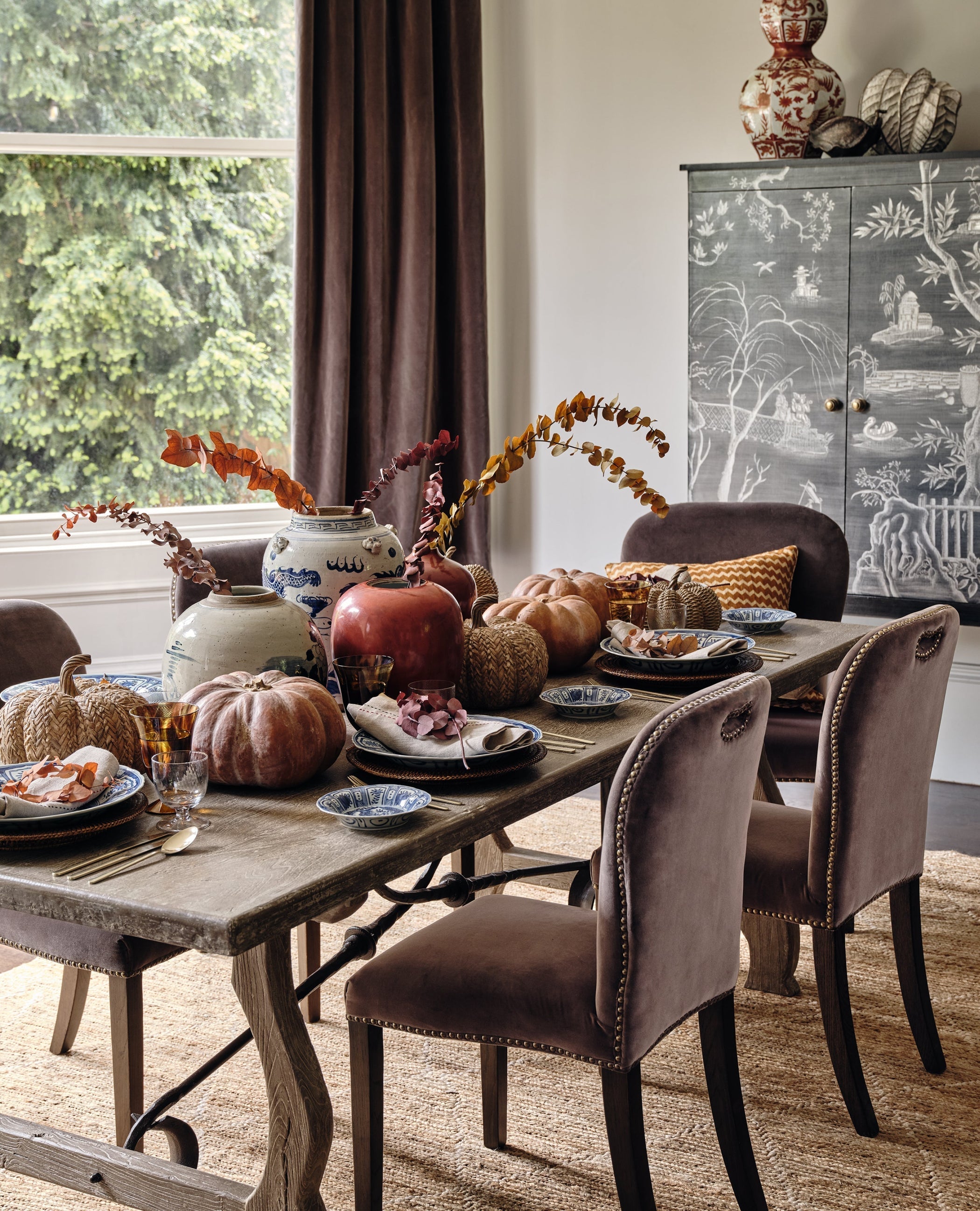
9 October 2025 | Emily Sims
How to Decorate a Table for Halloween
Get creative with your table decorations for Halloween, using the seasonal colours of orange, purple and green.

6 October 2025
How to bring nature into your home during winter
It’s easy to surround yourself with nature in the summer, when you can get out into the garden, entertain al fresco...

6 October 2025 | Ellen Millard
How to Use Lighting to Create a Cosy Home
Interior Designers Sophie Stevens and Lisa Mitchell share their tips for achieving a warm and inviting glow.
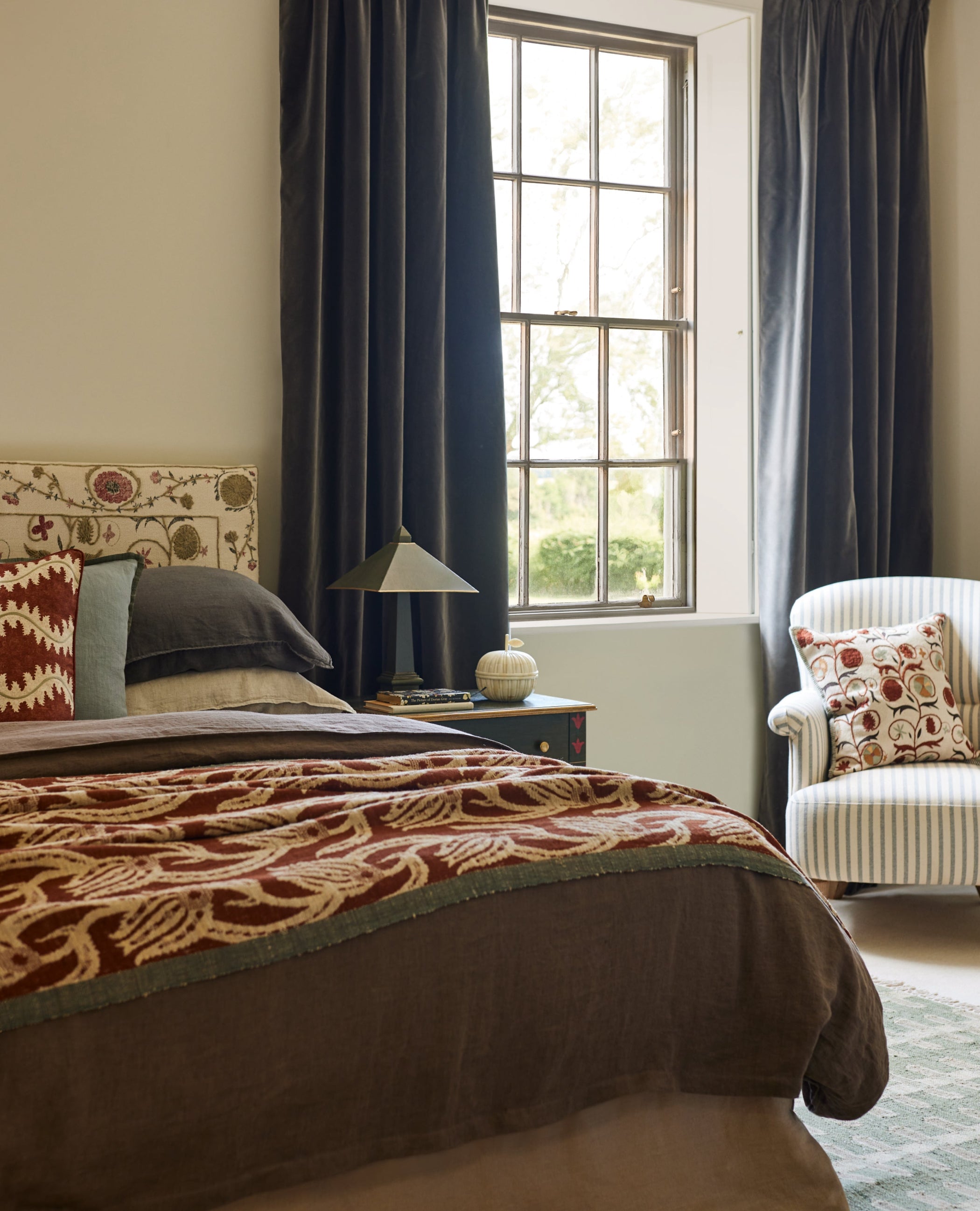
16 September 2025
How to Create a Bedroom for Hibernating at Home
Autumn is upon us, and with it a chance to take stock and rest up in a bedroom that’s as...




